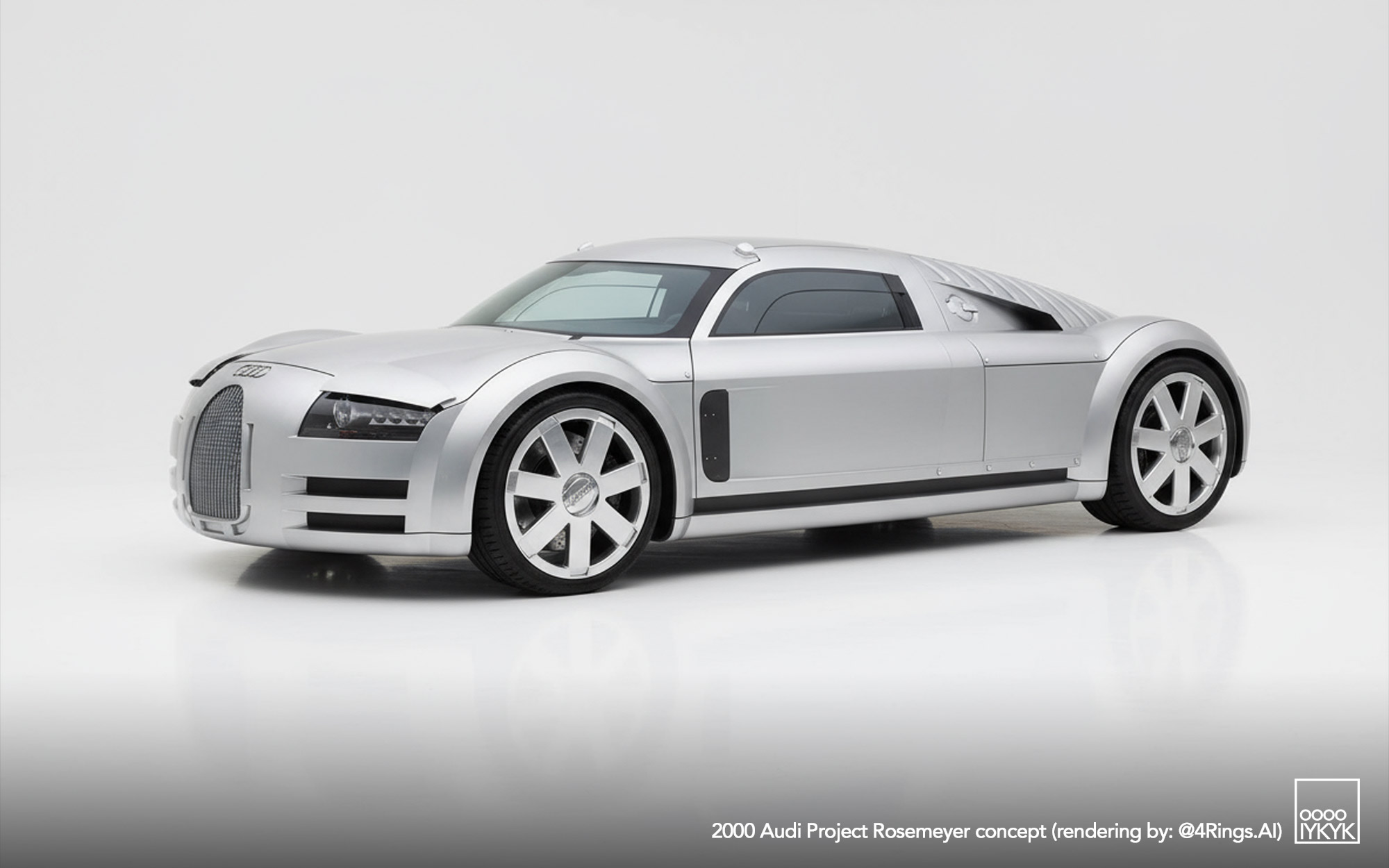What: Project Rosemeyer concept
Model Family: N/A
Debuted: Autostadt Audi Pavillion, Wolfsburg, Germany
Year: 2000
Number Produced: 1
Model / Generation Code(s): N/A
Chassis / Matrix: N/A
Engine: 8.0-liter W16
Transmission: 6-speed Manual
Power: 469.8 kw / 630.0 bhp
Peak Torque: 761 nm / 561.3 ft lbs @ 4000 rpm
Acceleration (0-100 km / 62 mph: unknown
Top Speed: ~350 kph / 217.5 mph
RELATED
Concept Cars: N/A
Road Cars: N/A
Race Cars: N/A

SUMMARY
Back in September 2000, Audi rolled out one of the wildest concept cars ever. Called Project Rosemeyer, it was a low-slung, brushed-aluminum coupe designed to honor Auto Union’s legendary Silver Arrows and named for one of their most famous drivers, Bernd Rosemeyer. Like the Auto Union racers of the 1930s, the car carried an aura of speed, even though it was never more than a design study.
The car’s grille borrowed heavily from the Auto Union racecars, the engine cover ran long with vertical cooling slots, and the entire body shimmered in bare aluminum. Big fender arches framed polished 20-inch wheels, while retractable headlight covers and cameras in place of mirrors made it as futuristic as it was retro. Proportions were dictated by what Audi stated lived underneath the skin: a naturally-aspirated 8.0-liter W16, good for a theoretical 700 horsepower and 760 Nm of torque, sending power to all four wheels through a six-speed manual and quattro. Audi claimed 350 km/h was possible, though the Rosemeyer never turned a wheel in heat.
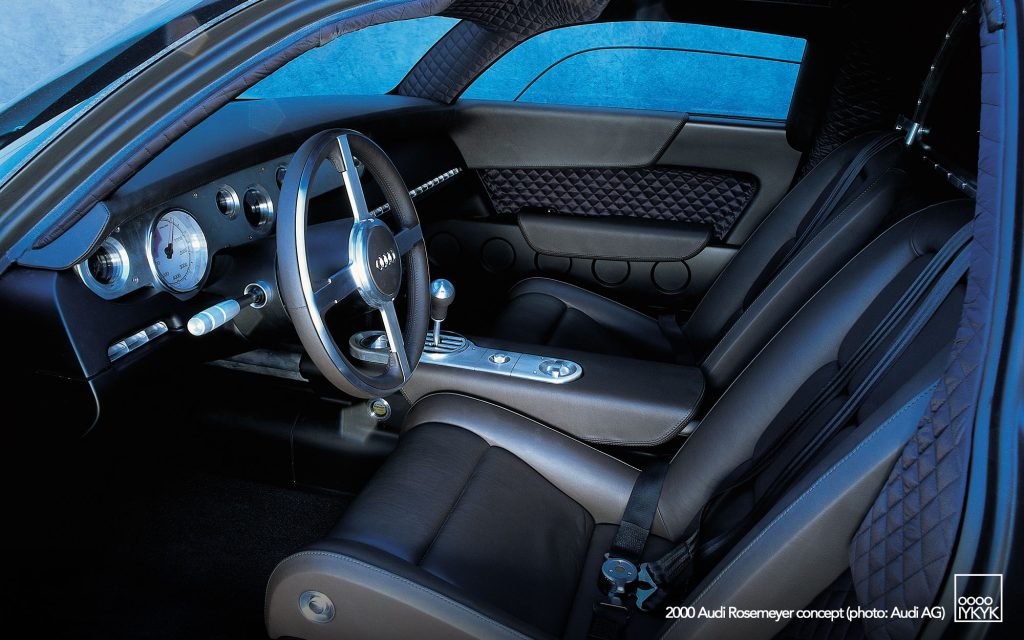
The name wasn’t chosen lightly. Bernd Rosemeyer was the young star of Auto Union’s prewar Grand Prix program, winning the European Championship in 1936. His life was cut short at 28 when he crashed during a land speed record attempt in 1938. The car that bore his name was meant as a tribute to the past, though its presence was more about projecting Audi’s ambition.
Inside, the Rosemeyer was as radical as the exterior. Fire-resistant Nomex lined the cabin, paired with brown leather buckets, a gated shifter, a massive tachometer, and a four-spoke wheel that looked straight out of a racecar. The cockpit was stark, purposeful, and free of luxury pretenses—this was Audi positioning itself as capable of building a supercar, even if it had no plans to produce one.

The Rosemeyer didn’t appear in isolation. At the time, Ferdinand Piëch had Volkswagen Group experimenting with mega-engine concepts across several brands. VW showed the W12 concepts, Bentley had the Hunaudières, Bugatti previewed the Veyron, and Audi delivered the Rosemeyer that itself followed the Avus and quattro Spyder concepts of 1991. Each played a part in the development that ultimately led to the Bugatti Veyron 16.4, which took the W16 engine concept and pushed it into quad-turbocharged 1,000 hp production reality.
In the end, the Rosemeyer joined Audi’s Avus Quattro as a showpiece in Audi Tradition’s vast collection—a reminder that the brand could dream as big as anyone. Though never intended for production, it remains one of the boldest concept cars of its era, equal parts heritage statement and engineering flex.
PHOTO GALLERY

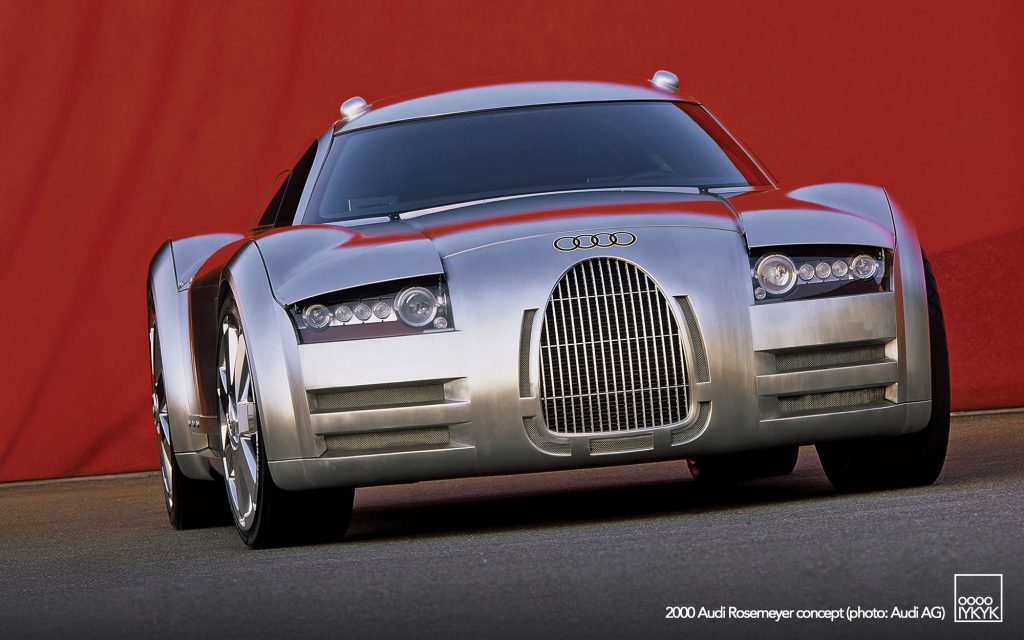
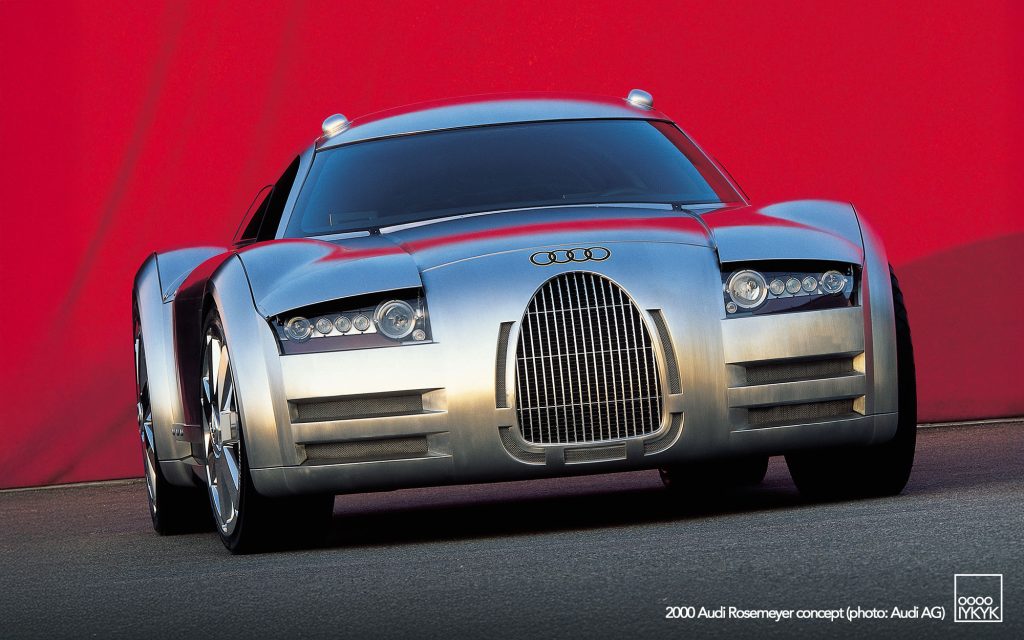
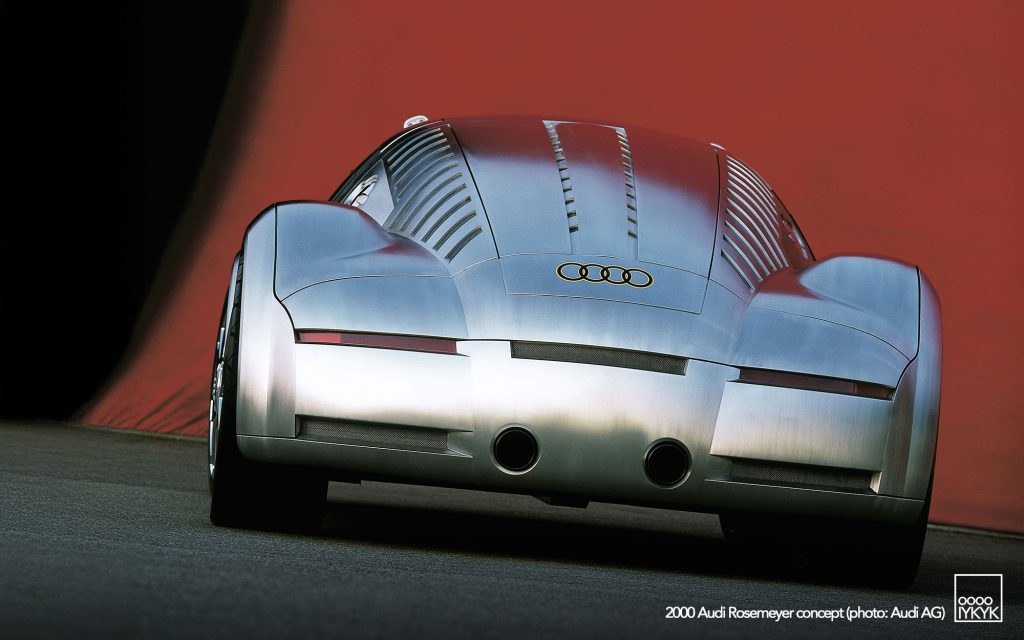
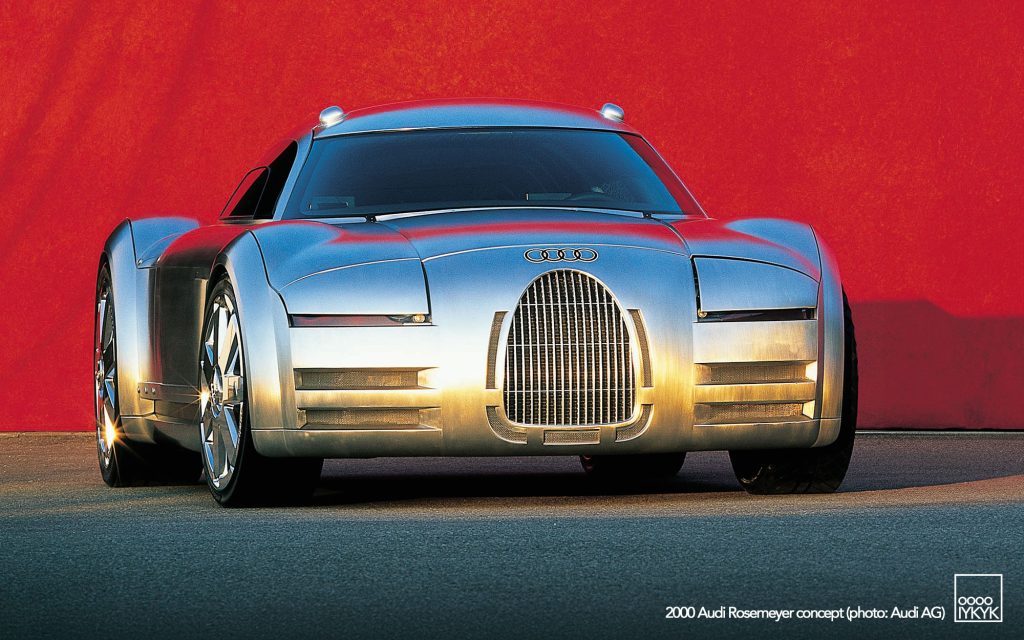
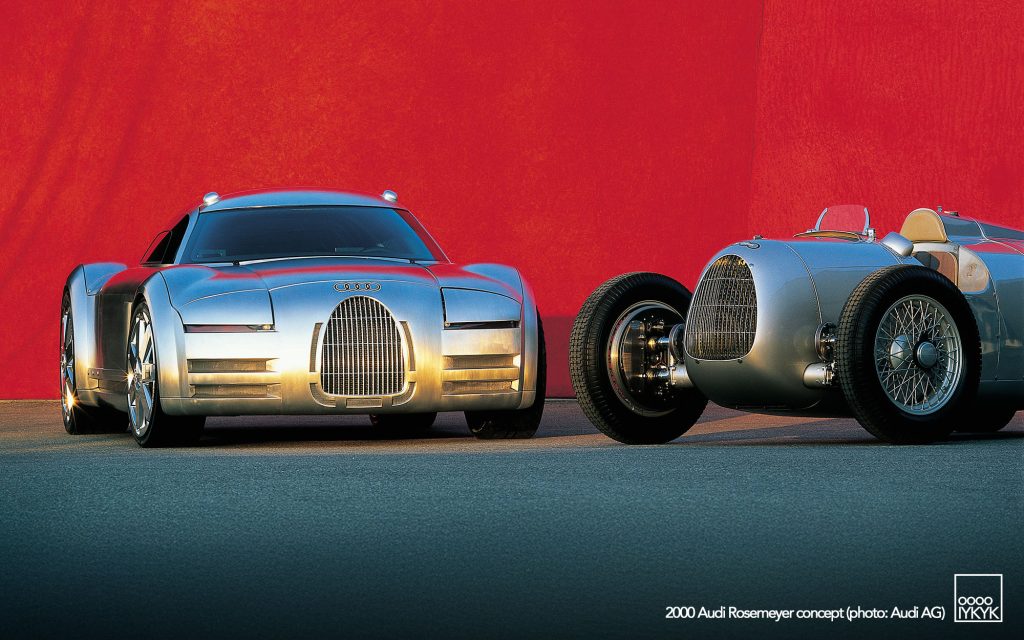

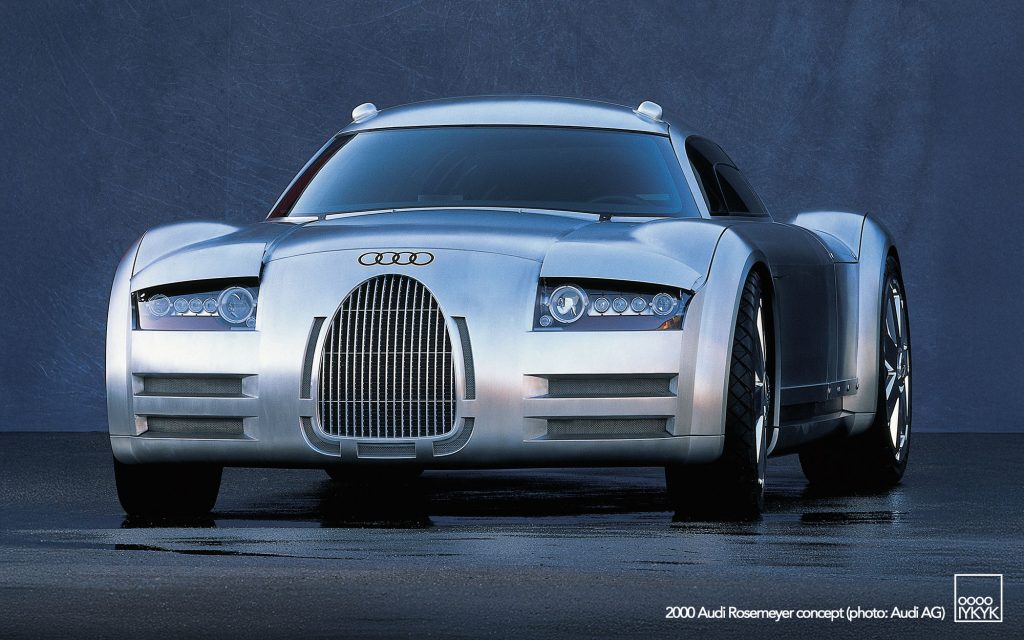

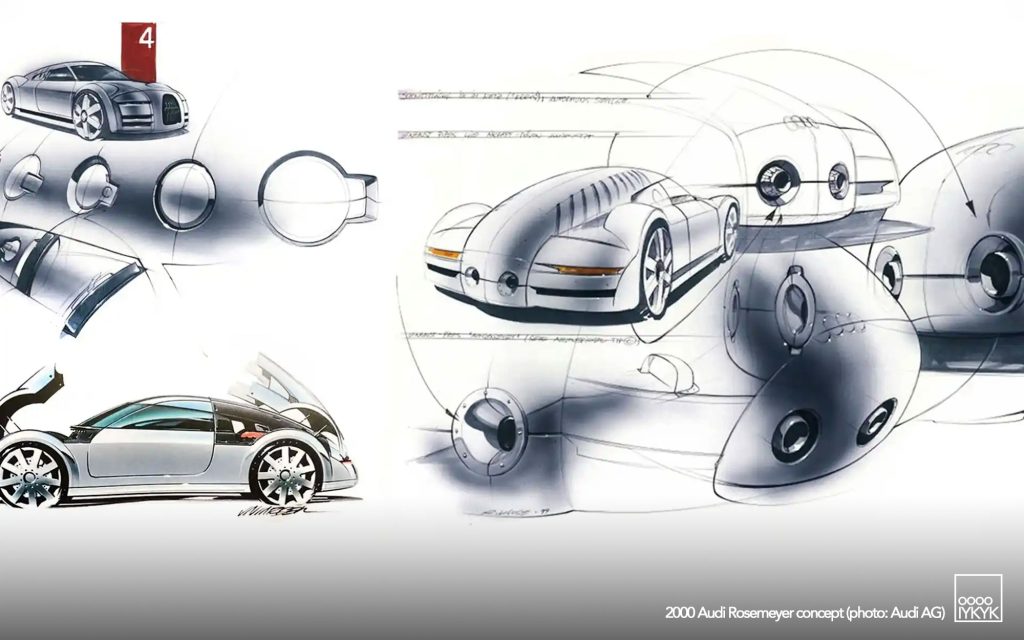
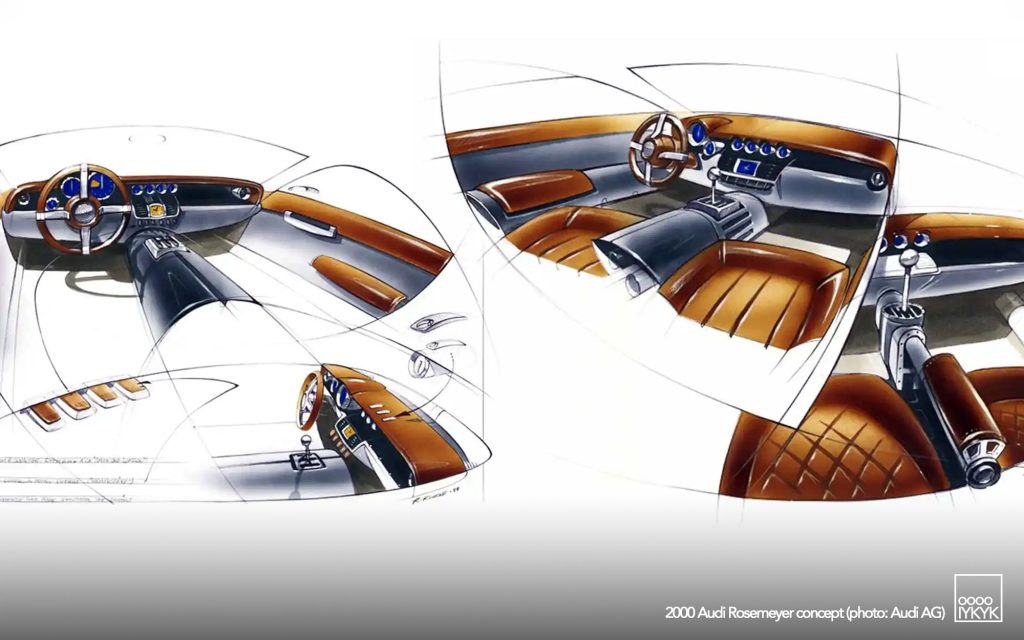
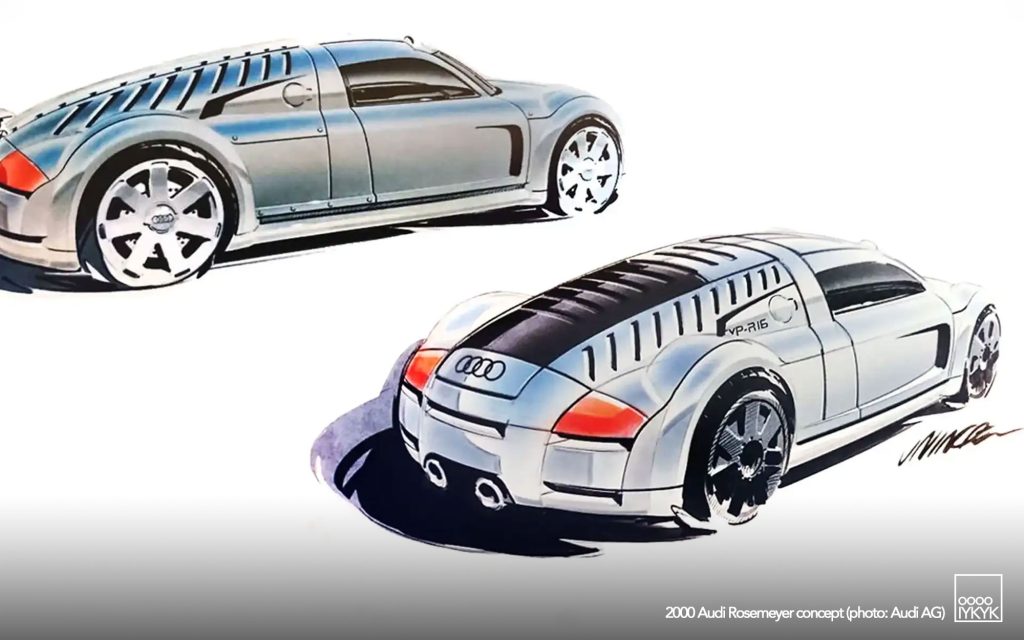


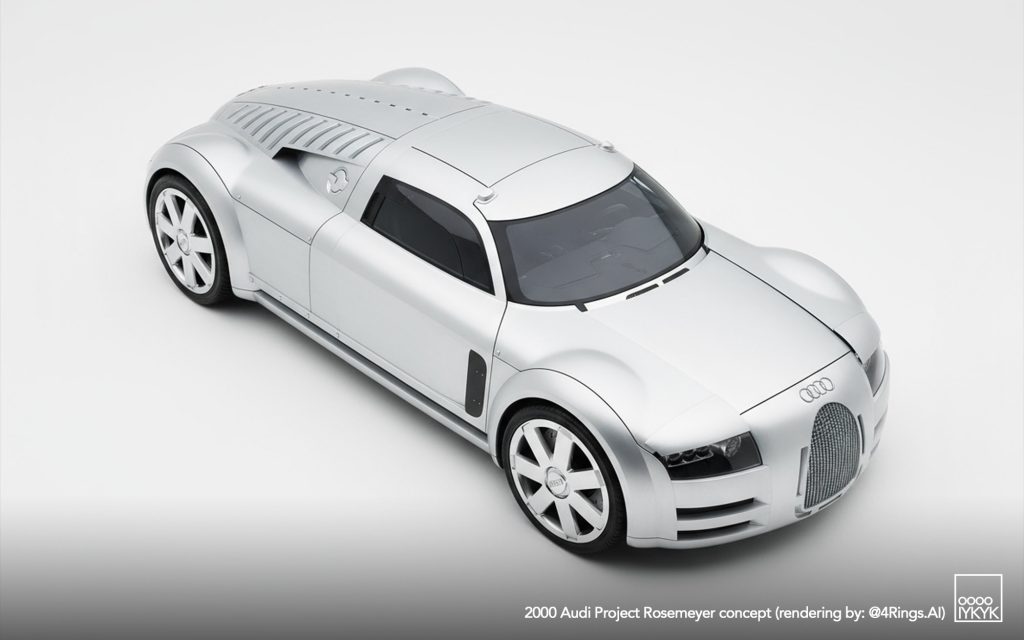


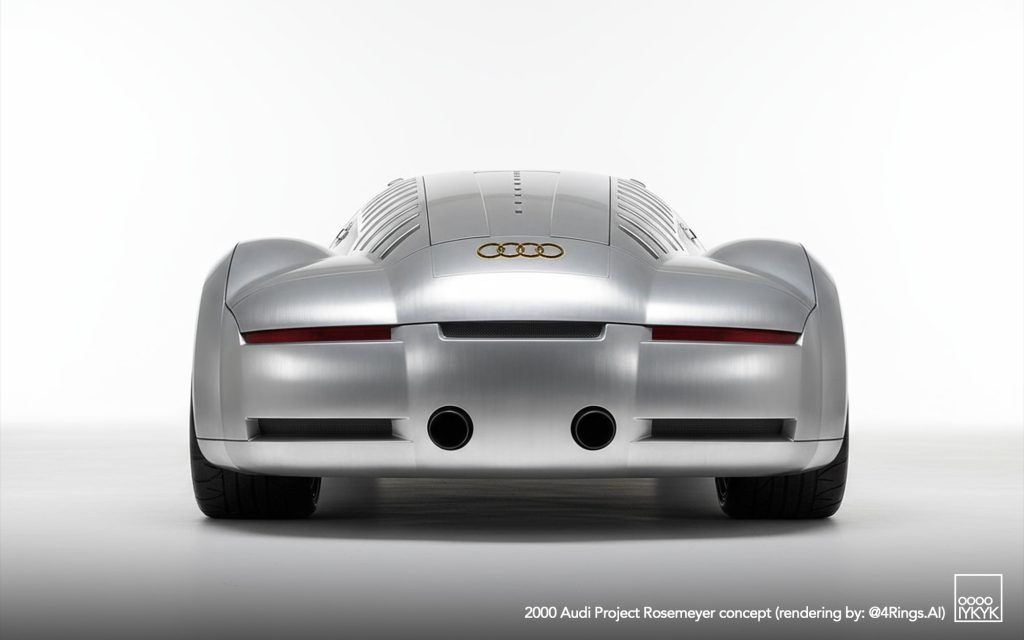
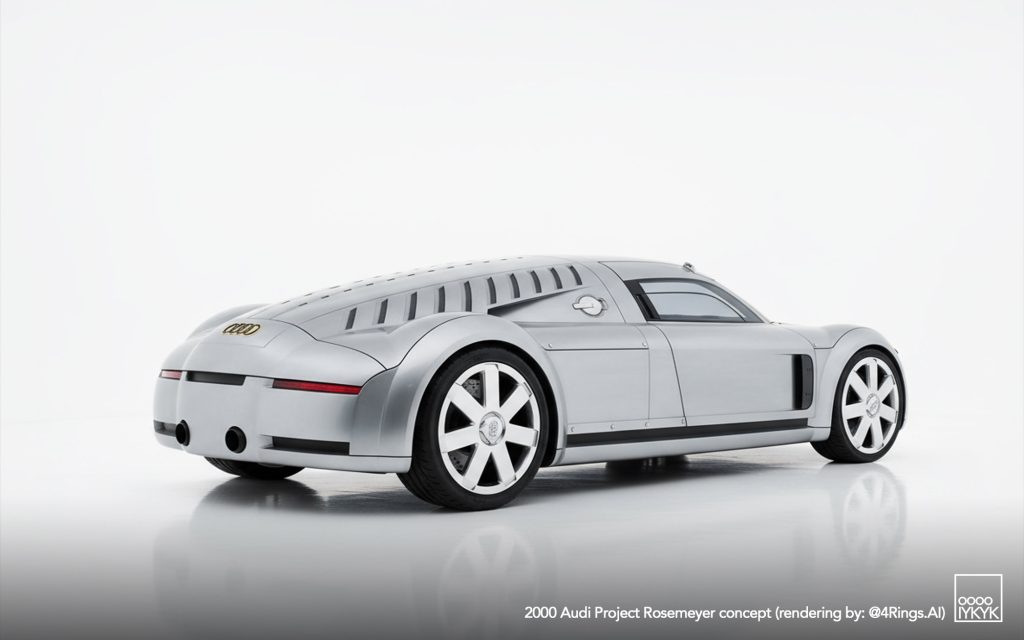

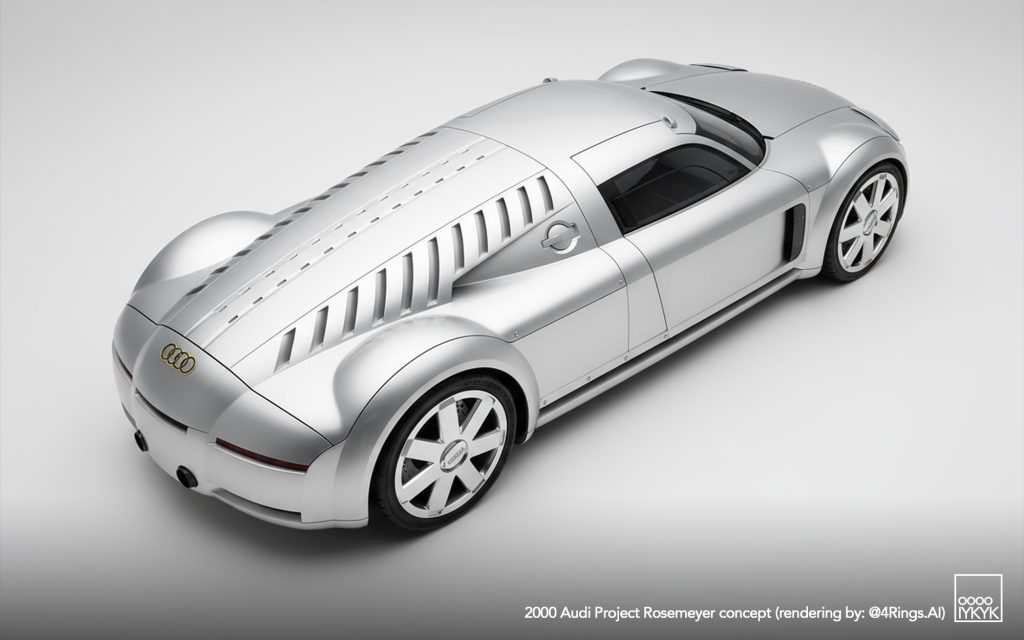

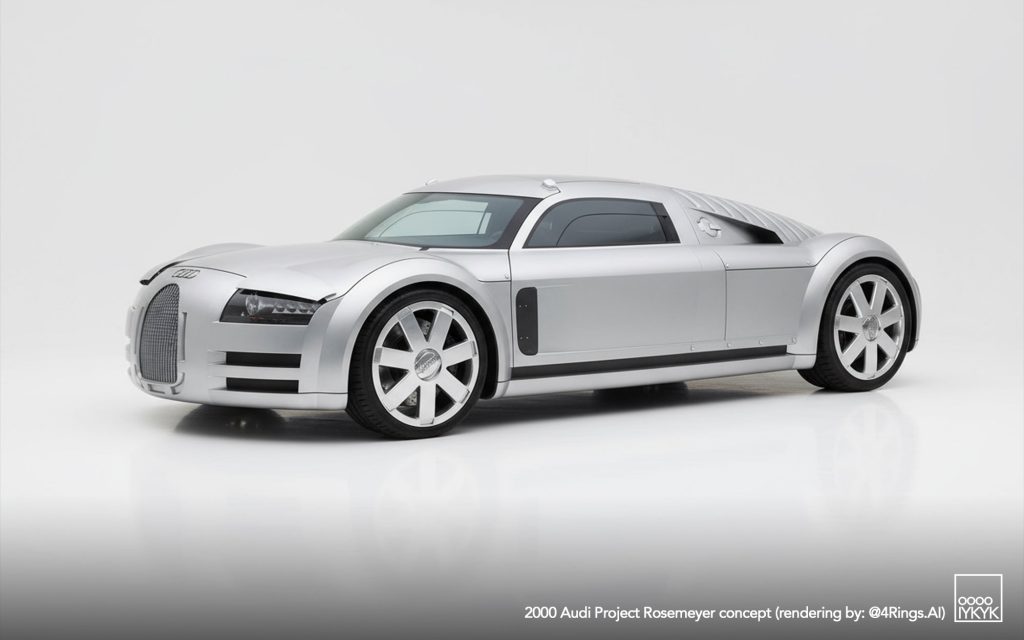

PRESS RELEASE
[source: Audi AG]
Ingolstadt, Germany – Crouched low, as if waiting to spring, the Audi Rosermeyer is a concentrated package of abounding energy precise geometry with flowing, aerodynamic lines and functional efficiency.
A second glance, and familiar features begin to appear: the massive radiator grille at once recalls the historic Auto Union Silver Arrow racing cars, and so does the long engine cover falling away to the rear, with its vertical air inlet slots. Just like the historic Silver Arrow cars too, the gleaming matt finish body with its brushed aluminium surface catches the light and conjures up an almost magical aura.
One thing is immediately clear: like the famous Silver Arrows, this low-built coupe could also be powered by a 16-cylinder mid-engine. There is plenty of space between the giant wheels in their high upward-curving wheel arches. A long wheelbase which creates space for two occupants and for a large-capacity engine in front of the rear axle.
Short overhangs seemingly hewn from the solid emphasise these proportions and give the side view its special power and presence. A large-capacity engine with sixteen cylinders – and suddenly the onlooker recalls: this was just the number that the Auto Union racing and record-breaking cars of the nineteen-thirties also had. Racing cars which legendary drivers such as Bernd Rosemeyer and Tazio Nuvolari steered from victory to victory.
Audi’s design study at the Autostadt in Wolfsburg is not a prototype ready to be driven, nor has it been created in anticipation of a production vehicle. But this vehicle visualises the technological potential of the Audi brand. Lightweight design, the ultimate dynamism and functional precision characterise the line of every detail, of every component.
At the very first glance we can see the large-diameter drilled brake discs behind the giant wheels. They are the logical counterpart to the performance of the undoubtedly powerful mid-engine.
Audi’s quattro permanent four-wheel drive would unquestionably provide it with the perfect basis for converting the power of a large engine into propulsion, to make an ultimate sports car study such as this eligible for the title of perfect driving machine.
Boldly shaped air inlets are a formal element at all points on the aluminium body of this Audi design study, and nowhere more so than at the front. The headlight units in the aerodynamically shaped nose seem to focus resolutely on the road: compact, powerful xenon headlights shine behind clear glass covers. The flat lights are protected behind flush-fitting metal panels that slide upwards when the headlights are switched on.
Large outside mirrors are difficult to accept for the aerodynamics engineer bent on perfection. For a perfect view of events behind the Audi design study, it therefore foresees several cameras that project rear and side views on to monitor screens in the cockpit.
Inside a super sports model: clarity as a blend of elegance and functional efficiency has been sought and found here too. The interior is trimmed with fire-resistant quilted Nomex like a racing car or helicopter cockpit. Two leather-covered bucket seats accommodate the driver and passenger behind a panoramic windscreen that is wrapped well round. This is the logical continuation of the purist interior architecture found in the TT cockpit.
The prominent centre tunnel with its polished aluminium tubes and the high window line integrate the position of the driver into the car in an ergonomically perfect manner, making him the nerve-centre of this super sports car. A workplace at the centre of a driving machine.
A window at the rear of the cockpit provides a clear view of this car?s powerful heart, the mid-engine. An enormous analog tachometer gives its pulse reading. Like the other instruments, its design picks up the aesthetic theme of the light units.
Adjustable racing pedals, an open lever gate for the six-speed gearbox and a steering wheel with four spokes at 90-degree intervals are the ideal instruments for the driver to keep the performance potential of this car under perfect control.
Brushed aluminium, carbon fibre and leather of the highest quality define the character of the interior that retains its clear purity with no concession to the ambience of a luxury saloon car. Precision craftsmanship can be found throughout: it has left its unmistakable mark of perfection on every material and every detail.
To produce an Audi such as has never been seen before.


